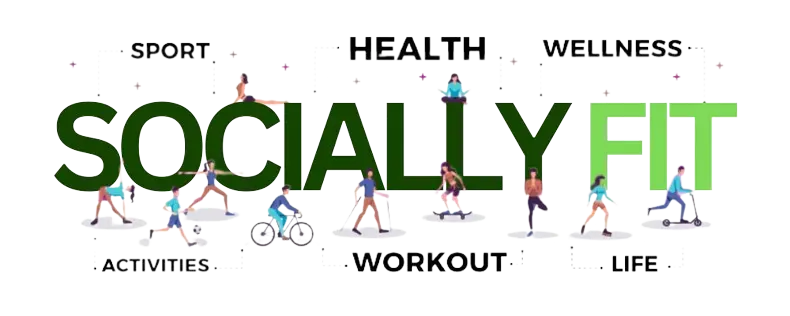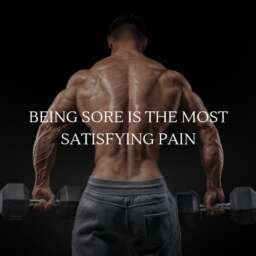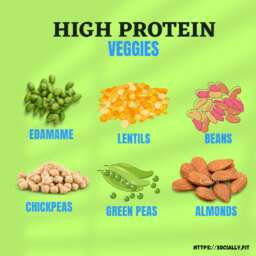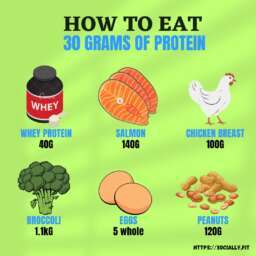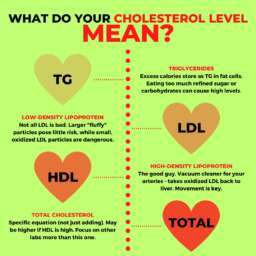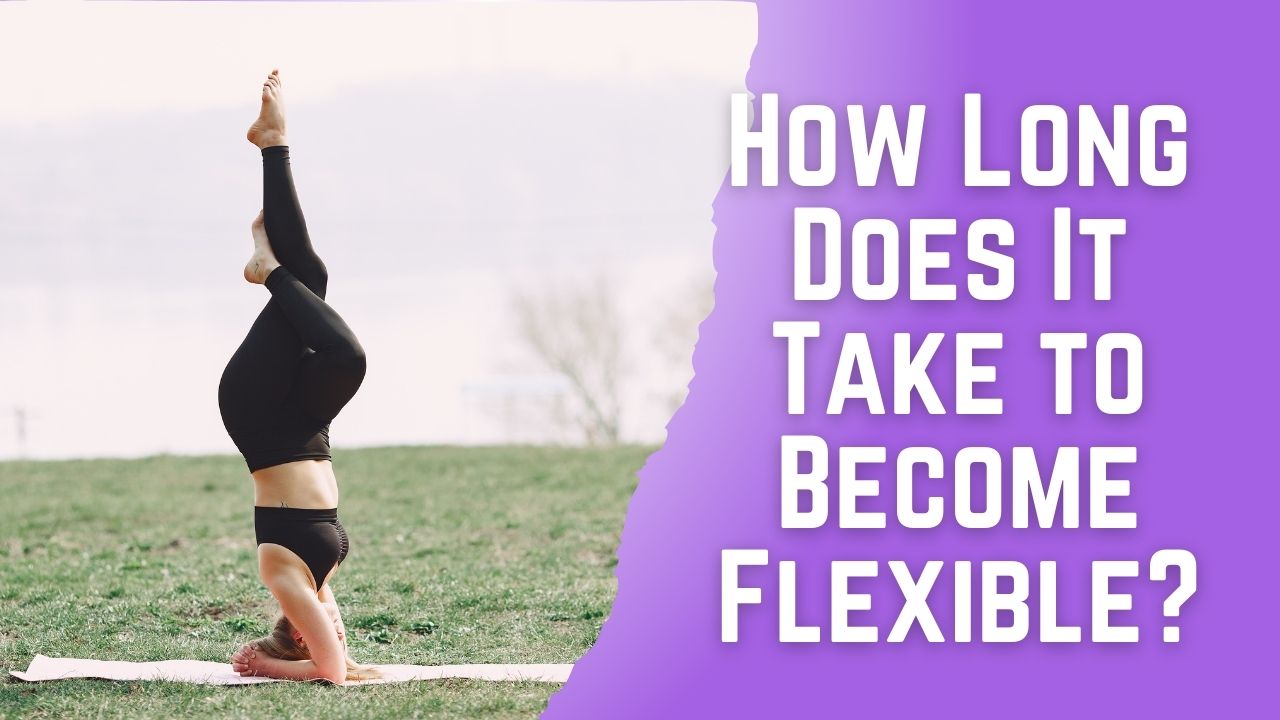Introduction
Flexibility is a crucial aspect of overall well-being, enhancing performance in various physical activities and promoting a healthier lifestyle. Many enthusiasts embark on a journey to improve flexibility, but a common question lingers: how long does it take to become flexible? In this comprehensive guide, we’ll explore this query in detail, providing valuable insights, tips, and expert advice to help you achieve your flexibility goals.
1. Understanding Flexibility
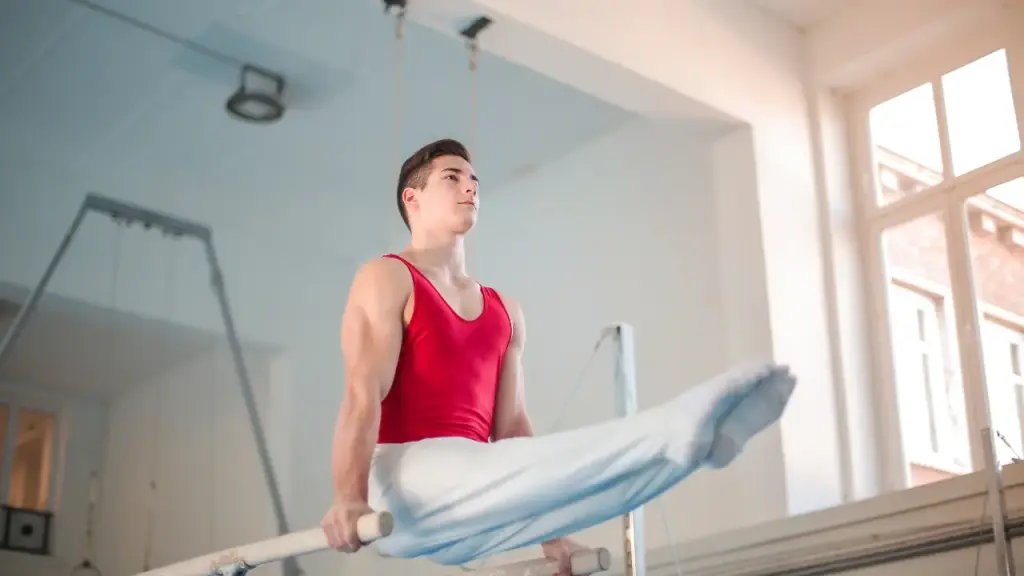
Flexibility is a pivotal component of overall physical well-being, encompassing the ability of muscles and joints to move seamlessly through their complete range of motion. This dynamic attribute is not just reserved for athletes or dancers; it’s a key factor for everyone seeking improved health and performance in daily activities.
Defining Flexibility
At its core, flexibility refers to the adaptability of muscles and joints to various movements. It involves the lengthening and stretching of muscles, allowing for a broader range of motion. This adaptability is crucial for preventing injuries, enhancing posture, and promoting better balance.
Importance of Flexibility
The significance of flexibility extends beyond mere physical prowess. It plays a crucial role in maintaining joint health, reducing muscle tension, and preventing stiffness. Whether you’re an avid fitness enthusiast or simply looking to enhance your overall well-being, understanding and incorporating flexibility into your routine is a valuable endeavor.
In the subsequent sections, we will delve into the factors influencing flexibility, effective stretching techniques, and actionable tips for tailoring workouts to achieve optimal flexibility. Let’s embark on this journey to unlock the full potential of your body’s flexibility!
How Long Does It Take to Become Flexible?
2. Factors Influencing Flexibility
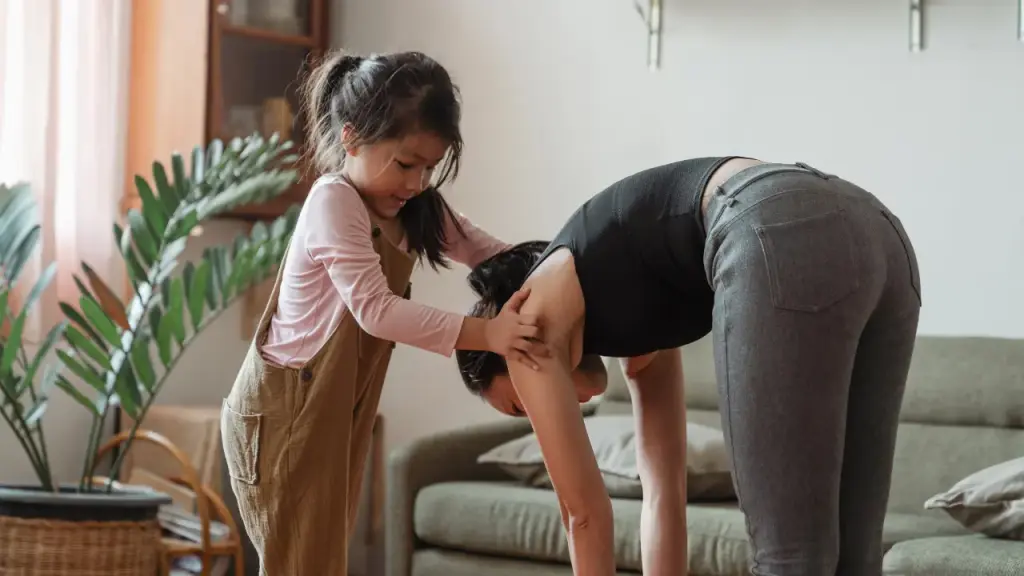
Understanding the dynamics of flexibility involves recognizing various factors that can influence this essential aspect of physical well-being. Let’s explore these factors in detail:
Genetics and Its Role
Genetics plays a noteworthy role in determining an individual’s baseline flexibility. Some people may inherit a natural predisposition for increased flexibility, while others might find it a bit more challenging to achieve similar results. However, it’s important to note that genetics don’t dictate a rigid limit; with dedicated effort, individuals can surpass their inherent flexibility constraints.
Age Considerations
Age is another factor that can impact flexibility. Generally, younger individuals tend to have greater flexibility, attributed to their more supple muscles and joints. Despite this, flexibility improvements are achievable at any age. With consistent effort and appropriate techniques, individuals of all ages can experience positive results in their flexibility journey.
Impact of Physical Activity
Engaging in regular physical activity is a powerful catalyst for improving flexibility. Specific exercises and routines focused on flexibility, such as stretching and yoga, contribute significantly to enhancing the body’s range of motion. The more actively you incorporate flexibility exercises into your routine, the more positively it influences your overall flexibility.
In the upcoming sections, we will delve into setting realistic expectations, effective stretching techniques, and tailoring workouts for flexibility. These insights will guide you in navigating your unique path toward increased flexibility and improved physical well-being.
How Long Does It Take to Become Flexible?
3. Setting Realistic Expectations

Embarking on a journey to improve flexibility requires a balanced approach, including understanding the importance of patience and embracing gradual progress. Let’s delve into these crucial aspects:
The Importance of Patience
Patience is a virtue, especially when it comes to enhancing flexibility. Recognize that flexibility gains are not instantaneous; they require consistent effort and time. Impatience can lead to frustration, hindering your progress. By cultivating patience, you create a positive mindset that supports your journey to increased flexibility.
Gradual Progress and Milestones
Flexibility is a journey marked by gradual progress and celebrated milestones. Setting realistic short-term and long-term goals allows you to track your advancement. Each achievement, no matter how small, signifies progress. Embrace the process, acknowledge your accomplishments, and use them as motivation to propel yourself further on your flexibility journey.
In the upcoming sections, we will explore effective stretching techniques, tailoring workouts for flexibility, and the role of nutrition in fostering flexibility. By combining patience with strategic goal-setting, you’ll lay a solid foundation for a successful and fulfilling path toward improved flexibility and overall well-being.
How Long Does It Take to Become Flexible?
4. Effective Stretching Techniques
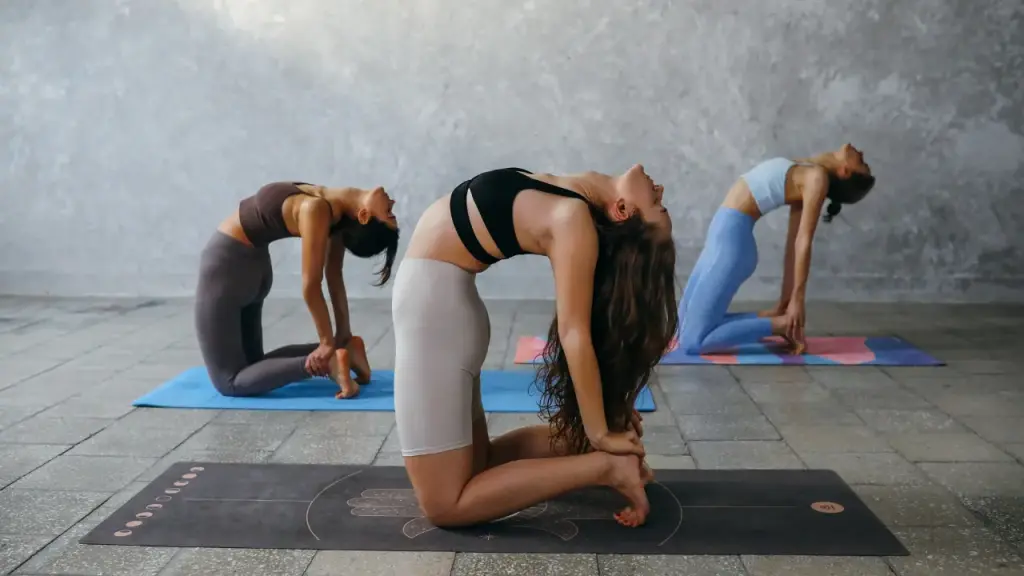
To unlock your full flexibility potential, understanding and incorporating effective stretching techniques are essential. Let’s explore the benefits of dynamic and static stretching, along with the incorporation of yoga for enhanced flexibility:
Dynamic vs. Static Stretching
Dynamic Stretching
This stretching involves controlled, active movements that take joints and muscles through their full range of motion. This type of stretching is particularly beneficial as part of a warm-up routine. Dynamic stretches increase blood flow, improve flexibility, and prepare the body for more intense physical activity.
Static Stretching
On the other hand, static stretching involves holding a specific position to elongate and stretch muscles. This type of stretching is ideal for post-workout cool-downs. Static stretches enhance overall flexibility, reduce muscle tension, and contribute to improved muscle and joint health.
Incorporating Yoga for Flexibility
Yoga, with its emphasis on controlled movements, poses, and breath control, is a holistic approach to enhancing flexibility. Incorporating yoga into your routine provides numerous benefits, including increased flexibility, improved balance, and enhanced mental well-being. Poses like downward dog, cobra, and pigeon are particularly effective for targeting various muscle groups and promoting overall suppleness.
In the upcoming sections, we’ll discuss tailoring workouts for flexibility, the role of nutrition, and strategies for overcoming plateaus. By integrating these stretching techniques into your routine, you’ll be well on your way to achieving a heightened level of flexibility and reaping the rewards of a more agile and resilient body.
How Long Does It Take to Become Flexible?
5. Tailoring Workouts for Flexibility
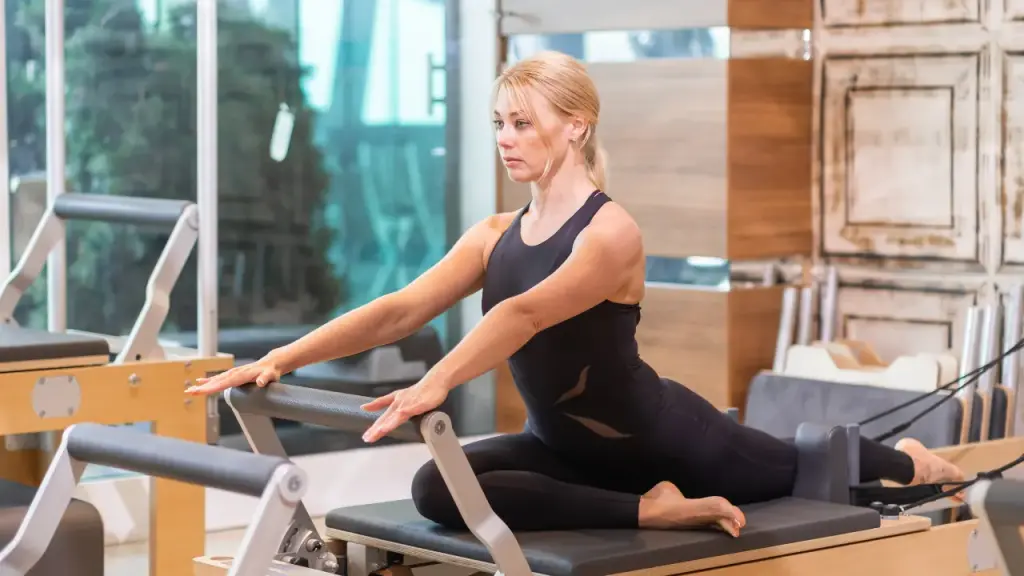
Achieving flexibility requires more than sporadic stretches; it involves the intentional integration of flexibility exercises into your regular workout routine. Let’s explore how to seamlessly incorporate these exercises for optimal results:
Integrating Flexibility Exercises into Your Routine
- Dedicate Specific Sessions: Allocate dedicated time in your weekly schedule for focused flexibility workouts. This ensures consistency and allows you to target specific muscle groups systematically.
- Include Dynamic Warm-ups: Begin your workouts with dynamic warm-ups, incorporating movements that mimic the activities you’ll be performing. This primes your muscles and joints for flexibility-focused exercises.
- Focus on Key Muscle Groups: Tailor your flexibility exercises to target key muscle groups relevant to your activities. For example, if you engage in running, emphasize stretches that benefit the hamstrings, quadriceps, and calves.
- Combine Flexibility with Strength Training: Integrate flexibility exercises into your strength training routine. This dual approach enhances overall fitness and ensures a well-rounded workout regimen.
- Experiment with Different Modalities: Explore various flexibility modalities, such as Pilates or barre workouts, to add diversity to your routine. This not only prevents monotony but also challenges your body in different ways.
- Utilize Props for Assistance: Incorporate props like yoga blocks or resistance bands to assist in stretches. These tools can aid in achieving deeper stretches and provide support as you work on improving flexibility.
By intentionally incorporating flexibility exercises into your routine, you’ll witness enhanced range of motion, reduced muscle tightness, and improved overall flexibility. In the subsequent sections, we will discuss the role of nutrition in supporting flexibility and strategies for overcoming plateaus in your flexibility journey. Stay committed, and you’ll soon experience the positive transformations that come with a more supple and agile body.
How Long Does It Take to Become Flexible?
6. Nutrition’s Role in Flexibility
As you delve into the realm of flexibility, it’s crucial to recognize the significant impact that nutrition can have on your journey. Let’s explore the importance of hydration and the specific nutrients that support muscle elasticity:
Importance of Hydration
- Maintaining Muscle Elasticity: Staying adequately hydrated is paramount for maintaining muscle elasticity. Dehydration can lead to muscle tightness and decreased flexibility. Ensure you consistently consume an ample amount of water throughout the day to support your body’s flexibility goals.
- Joint Lubrication: Hydration plays a key role in joint lubrication. Well-lubricated joints move more freely, facilitating a broader range of motion during flexibility exercises. Make hydration a priority, especially before and after your workouts.
Nutrients Supporting Muscle Elasticity
- Magnesium: This essential mineral is a powerhouse for muscle health and flexibility. Magnesium aids in muscle relaxation, reducing stiffness and promoting flexibility. Include magnesium-rich foods in your diet, such as leafy greens, nuts, and whole grains.
- Vitamins D and K: These vitamins contribute to bone health and play a role in muscle function. Adequate levels of vitamin D and K support overall muscle elasticity, making them crucial for those on a flexibility journey. Sun exposure and certain foods like fatty fish and dairy can boost your intake of these vitamins.
- Omega-3 Fatty Acids: Found in fish oil and certain seeds, omega-3 fatty acids possess anti-inflammatory properties. Incorporating these healthy fats into your diet can help reduce muscle inflammation, promoting flexibility and joint health.
In the following sections, we’ll discuss overcoming plateaus and listening to your body to ensure a holistic approach to flexibility. By aligning your nutritional choices with your flexibility goals, you’ll be optimizing your body’s capacity to achieve and maintain increased flexibility. Stay hydrated, nourished, and committed to your journey!
How Long Does It Take to Become Flexible?
7. Overcoming Plateaus
In the pursuit of flexibility, encountering plateaus is a common challenge. Understanding how to identify and break through these stagnation points is crucial for continuous progress. Let’s explore effective strategies for overcoming plateaus:
Identifying Stagnation Points
- Monitoring Progress: Regularly assess your flexibility progress through measurements and tracking tools. Plateaus often manifest as a lack of improvement over time. Consistent monitoring helps identify when progress slows or halts.
- Reassessing Your Routine: Evaluate your current flexibility routine. Plateaus may arise from repetitive or inadequate exercises. Consider introducing new stretches, altering your routine, or increasing the intensity to stimulate further gains.
- Listening to Your Body: Pay close attention to your body’s signals. Persistent discomfort or pain during stretches could indicate overtraining. Adjust your routine or provide adequate rest to prevent injuries and overcome plateaus.
How Long Does It Take to Become Flexible?
Breaking Through Stagnation Points
- Introducing Variety: Incorporate a variety of flexibility exercises to target different muscle groups. This prevents your body from adapting to a specific routine, encouraging continual improvement.
- Increasing Intensity Gradually: Gradually intensify your stretches over time. Progressive overload stimulates muscle adaptation, preventing your body from reaching a plateau. However, ensure the increase is gradual to avoid injuries.
- Cross-Training: Engage in cross-training activities that complement flexibility, such as strength training or cardiovascular exercises. This diversification challenges your body in new ways, fostering overall improvement.
- Seeking Professional Guidance: If plateaus persist, consider consulting a fitness professional or physical therapist. Their expertise can provide personalized insights and tailored strategies to overcome specific challenges.
By being proactive in identifying stagnation points and implementing targeted strategies, you’ll effectively navigate and overcome plateaus in your flexibility journey. In the following sections, we’ll explore the importance of listening to your body and share real-life experiences from individuals who have successfully achieved flexibility. Stay resilient, stay patient, and keep pushing towards your flexibility goals!
How Long Does It Take to Become Flexible?
8. Listening to Your Body
A crucial aspect of the flexibility journey involves tuning in to your body’s signals to prevent overtraining and injuries. Let’s explore why listening to your body is vital and how to navigate this aspect of your flexibility routine:
Avoiding Overtraining
- Recognizing Fatigue: Pay attention to signs of fatigue during and after your flexibility sessions. Persistent muscle soreness, decreased performance, and irritability may indicate overtraining. Allow your body sufficient time to recover.
- Adjusting Intensity: While it’s essential to challenge yourself, be mindful of excessive intensity. Gradually increase the difficulty of your stretches, ensuring a balance that challenges without straining your muscles excessively.
- Incorporating Rest Days: Schedule regular rest days to allow your muscles to recover. Overtraining can hinder flexibility gains and increase the risk of injuries. Embrace the restorative power of adequate rest in your routine.
How Long Does It Take to Become Flexible?
Preventing Injuries
- Maintaining Proper Form: Focus on maintaining proper form during stretches. Incorrect form can strain muscles and joints, leading to injuries. Educate yourself on the correct technique for each exercise to minimize the risk of injury.
- Listening to Pain Signals: Distinguish between the discomfort associated with stretching and actual pain. Sharp, sudden pain during a stretch may indicate an injury. If you experience pain beyond typical muscle discomfort, stop the exercise and seek professional advice.
- Gradual Progression: Progress your flexibility routine gradually. Rapid advancements can lead to injuries. Give your muscles and joints time to adapt to new challenges, reducing the likelihood of strains or sprains.
By respecting your body’s limitations and incorporating preventive measures, you’ll create a sustainable and injury-free environment for your flexibility journey. In the upcoming sections, we’ll delve into real-life experiences of individuals who have successfully achieved flexibility, providing inspiration and practical insights for your own path. Remember, a balanced approach ensures longevity and continual improvement in your flexibility endeavors.
How Long Does It Take to Become Flexible?
9. Real-life Experiences
Embarking on a flexibility journey is a personal and rewarding endeavor. Let’s draw inspiration from real-life success stories of individuals who have overcome challenges and achieved remarkable flexibility:
Sarah’s Transformation
Sarah, a busy professional, initially struggled with flexibility due to long hours at a desk. She committed to incorporating short stretching sessions into her daily routine. Over several months, Sarah experienced significant improvements. Consistency and patience were her keys to success.
Jake’s Fitness Journey
Jake, an avid fitness enthusiast, faced plateaus in his flexibility routine. He diversified his workouts, incorporating elements of yoga and Pilates. This holistic approach not only broke through plateaus but also enhanced his overall strength and flexibility.
Maya’s Age-Defying Flexibility
Maya, in her 50s, defied age limitations and achieved remarkable flexibility through dedication and a tailored routine. She emphasized listening to her body, gradually increasing intensity, and celebrating small milestones. Maya’s story proves that flexibility knows no age boundaries.
Carlos’s Recovery Story
Carlos, recovering from an injury, used flexibility exercises as part of his rehabilitation. With guidance from a physical therapist, he navigated through challenges, gradually rebuilding strength and flexibility. Carlos’s journey highlights the rehabilitative power of flexibility exercises.
Emma’s Balanced Approach
Emma, a yoga instructor, found balance by combining flexibility exercises with strength training. This dual approach not only improved her flexibility but also enhanced her overall fitness. Emma’s experience emphasizes the importance of a well-rounded routine.
These real-life success stories showcase the diverse paths individuals have taken to achieve flexibility. Whether overcoming sedentary lifestyles, breaking through plateaus, defying age expectations, recovering from injuries, or embracing a balanced approach, these stories offer valuable insights and motivation for your own flexibility journey.
In the final sections, we’ll address frequently asked questions (FAQs) about flexibility and conclude with a bold message. Stay inspired and committed as you continue your unique path towards improved flexibility and overall well-being.
How Long Does It Take to Become Flexible?
10. Frequently Asked Questions (FAQs)
Let’s address some common queries individuals often have about flexibility:
How long does it take to become flexible?
Achieving flexibility varies from person to person. Consistent effort, proper techniques, and individual factors play a role. Patience is key in the journey.
Are there age limitations for improving flexibility?
No, flexibility improvements are possible at any age. While younger individuals may progress faster, consistent effort yields positive results for everyone.
Can genetics limit flexibility gains?
Genetics may influence baseline flexibility, but with dedicated effort, individuals can surpass their natural predispositions.
Is yoga necessary for improving flexibility?
While not mandatory, yoga can significantly enhance flexibility due to its focus on controlled movements and poses.
How often should one stretch for optimal results?
Consistency is vital. Regular, dedicated sessions, at least 3-4 times a week, yield better results than sporadic intense sessions.
What role does nutrition play in flexibility?
Hydration is critical for muscle elasticity. Including nutrients like magnesium and vitamins D and K supports overall muscle health.
These FAQs provide insights into common concerns about flexibility, offering guidance for those on the journey to enhanced suppleness. In the conclusion, we’ll summarize key takeaways and leave you with a bold message to inspire and motivate you further in your flexibility endeavors.
How Long Does It Take to Become Flexible?
Conclusion
Embarking on the journey to increased flexibility is a commitment to personal well-being, strength, and resilience. Throughout this comprehensive guide, we’ve explored the intricacies of flexibility, delving into defining its importance, understanding influencing factors, setting realistic expectations, and incorporating effective techniques into your routine.
From the importance of patience and the role of hydration to the significance of nutrients supporting muscle elasticity, each aspect has been carefully examined. We’ve discussed strategies for overcoming plateaus, the vital importance of listening to your body to avoid overtraining and injuries, and real-life experiences that illustrate the diverse paths individuals take to achieve flexibility.
As you continue your flexibility journey, remember that progress is a gradual and ongoing process. Celebrate small victories, stay consistent, and be mindful of your body’s signals. Whether you’re defying age expectations, recovering from injuries, or pursuing a balanced approach like the individuals in our real-life experiences, your path is unique and valid.
In the spirit of continuous growth, stay inspired by the success stories and insights shared. Flexibility is not just a physical attribute; it’s a holistic journey encompassing mental resilience, patience, and self-discovery. Embrace the challenges, relish the victories, and enjoy the evolution of your flexibility and overall well-being.
How Long Does It Take to Become Flexible?
Click here to learn more about weight loss and workout videos.
